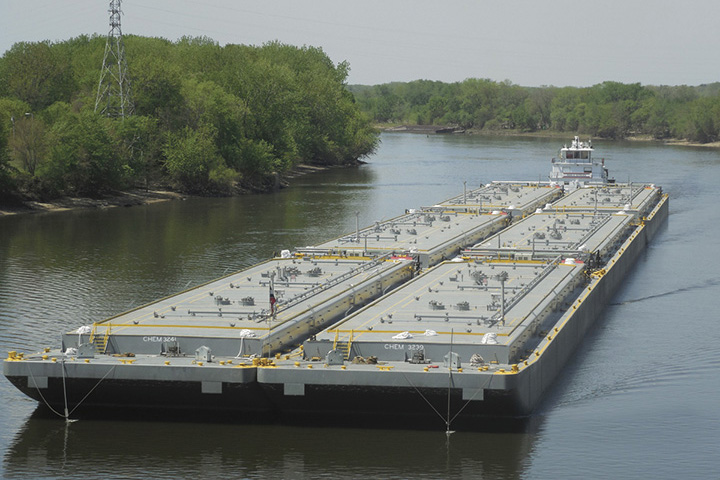When you were in school did you ever feel like you just couldn’t get a break? Maybe you were always the smallest in your class. You never got picked first for games at recess. You tried really hard to get good grades, studied on Friday nights, and never caused a disruption in class. But it was always the bigger, faster and rowdier kids that got all the attention.
Now you understand the predicament of the inland waterways industry as it tries to navigate in a highly unpredictable place like Washington, D.C., against the big boys (and girls) who advocate for noisy trucks, big bridges, endless highways, and railroads that seem to be in everyone’s backyard. Over the decades, federal money for transportation tended largely to gravitate toward those highly visible sectors, leaving the rivers starved of love and money, ambling along just doing their jobs as best they could as the infrastructure they depended on crumbled and crashed.
Now it’s time to raise a ruckus because a big infrastructure initiative is forcing Washington to pay attention.
President Trump’s long-awaited infrastructure plan was released two weeks ago, but unfortunately, it fell like a lead barge on top of the inland waterways industry. Instead of embracing the barge industry’s wish list for much needed repairs and modernization of ailing locks and dams, the plan and the administration’s fiscal 2019 budget went in a different direction. It proposes vessel fees, lockage tolls and cuts in federal waterways funding.
In the view of Mike Toohey, president and CEO of the Waterways Council Inc., the industry-supported advocacy group for inland funding, elements of the plan “would be disastrous” for river commerce.
He told a press gathering earlier this week that putting more financial burdens on barging — and not spreading out the costs among other river beneficiaries — would lead to higher costs for moving stuff on the waterways, push commodities over to rail and truck and add to greater pollution and congestion. Even worse, it could encourage international customers to buy their soybeans, coal and grains from places like Brazil and Argentina which are heavily investing in their inland river systems.
Members of the industry from across the country fanned out recently over Capitol Hill meeting with their local congressmen and senators to plead the case for making major adjustments to the president’s plan. They report that they found many friendly ears for their opposition to taxes or lockage fees, and their support for a healthy federal budget for waterways projects and a change in the cost share formula that finances these projects. They also want Uncle Sam to keep his bargain in the cost-sharing Inland Waterways Trust Fund and spend the fund’s money and not hold onto it. They also want a portion of the roughly $1.5 billion in revenues that the federal government gets each year from the sale of hydropower generated from dams operated by the Corps of Engineers to go to the trust fund. Hydropower is a major beneficiary of the river system but pays nothing for using it, Toohey said.
The industry has some good arguments on its side that relate to cost savings, the environment, trade, equity and jobs. One is that the waterways, compared to other transportation modes, are greatly underutilized. There is much capacity to grow commerce on the rivers, as long as the lock and dam system is in good shape to support the traffic, and this will be needed to accommodate the nation’s continued economic and population growth. “As the only mode that has excess capacity, maritime is the obvious solution,” Mark Buzby, administrator of the Maritime Administration, told the industry at its recent meetings in Washington.
But the industry has to unite in the months ahead if it wants to convince policymakers that an underutilized system deserves investment not rejection, and that without waterways, other elements of the nation’s noisier and more visible transportation system can not function properly.
“I’m hoping we’ll be able to fashion a compromise that works for us and our customers that will be signed into law,” Toohey said.
So let the big guys know that you can pump above your weight and size in this town. It’s time to get rowdy.



.JPG.small.400x400.jpg)

